#Japanese motif
Explore tagged Tumblr posts
Text

Priest's Kasaya with Peony Scrolls and Ritual Buddhist Implements (Known as "Dream Robe")
Unknown 14th Century
Detail showing hand-drawn, gold-painted poppy scrolls.
#kasaya#peony#peonies#Japanese peony#botan#botan peony#Japanese motif#Japanese ornament#dream robe#Paeonia#buddhist#buddhism#history#japan
2 notes
·
View notes
Photo
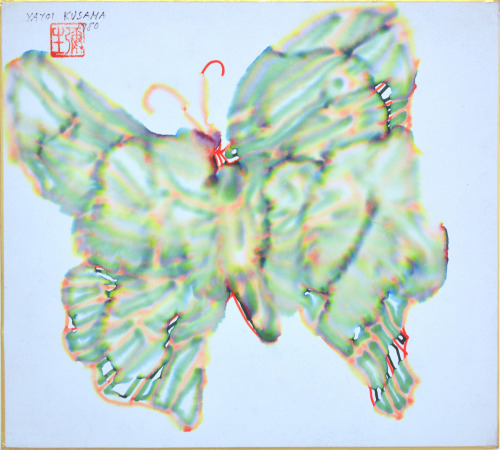
Fluttering through the canvas - Yayoi Kusama's 1980 Butterfly
1K notes
·
View notes
Text
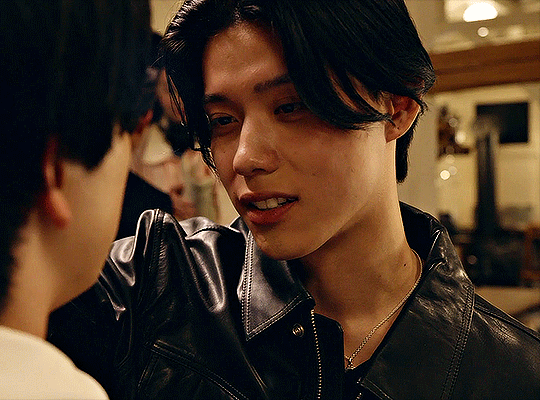

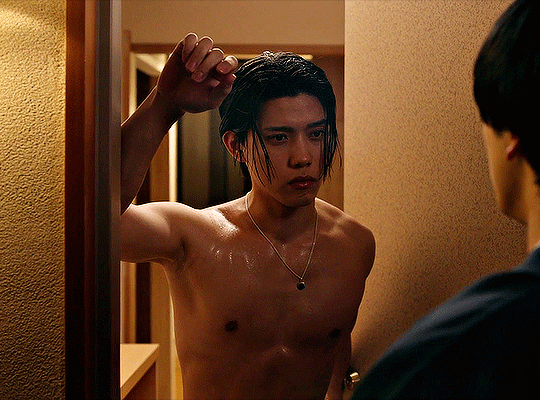
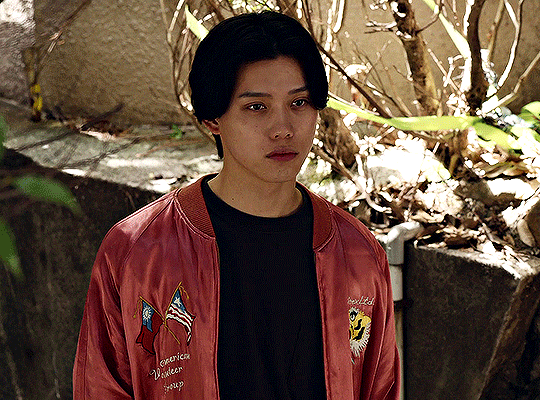
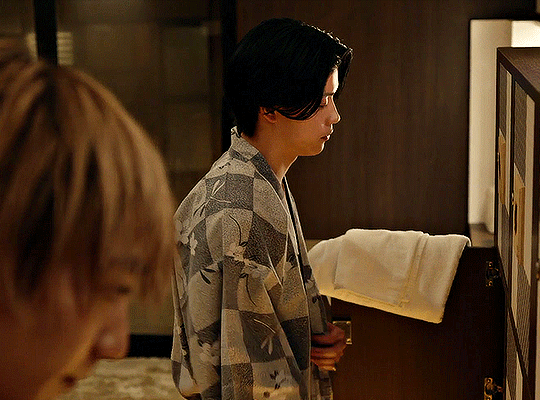
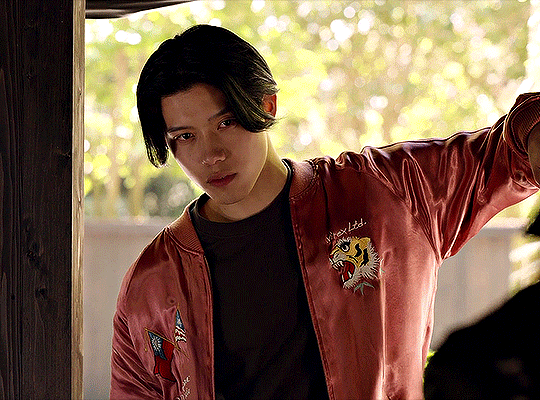


25 Ji, Akasaka de / At 25:00 in Akasaka (2024) I 1.05
Nagumo Shoma as Yamase Kazuma
#25 ji akasaka de#at 25:00 in akasaka#userfaiza#jdramasource#jdramaedit#asiandramasource#usersugar#userrobin#userrlaura#userlera#userharu#moonlightsdream#asiandramanet#useraurore#bl series#japanese bl#nagumo shoma#he plays the antagonist that observes and understands everything he sees so well#his character is not dumb and i like it sooooooooooo much#plus when he leans against a wall or a doorframe you KNOW shit's about to go down#also love i that his to go outfits in this series are: 1) his 'in character' red jacket with the tiger motif#2) his real life all black ensemble with the leather jacket#and of course my favorite 3) the no shirt look with just his necklace#+ if they think that i didn't notice the hand grabbing his bicep and tricep in the last gif then they're dead wrong#mywork
314 notes
·
View notes
Text

anotha one. character i made in 2013
#i have to rename her bc i named her yin back then. which is chinese. and then gave her a bunch of japanese motifs#SO.#suppose i could find similar enough design analogues that are chinese though idk
187 notes
·
View notes
Text

#mori kei#mori kei fashion#mori fashion#mori girl#lolita fashion#japanese fashion#bunnycore#accessories#leafcore#j fashion#knits#miri kei motif#motif#leaf#it.girl.uploads
109 notes
·
View notes
Text

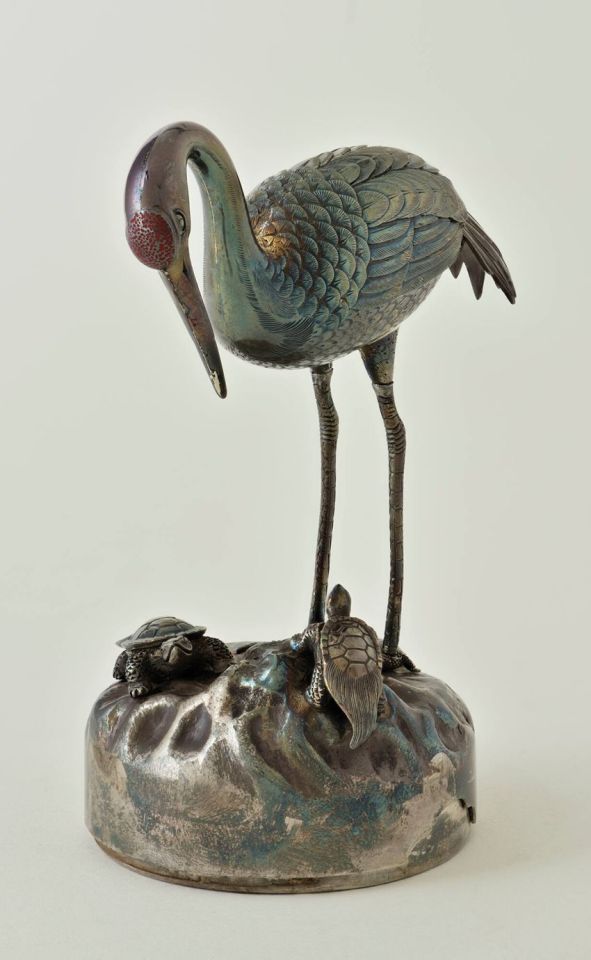
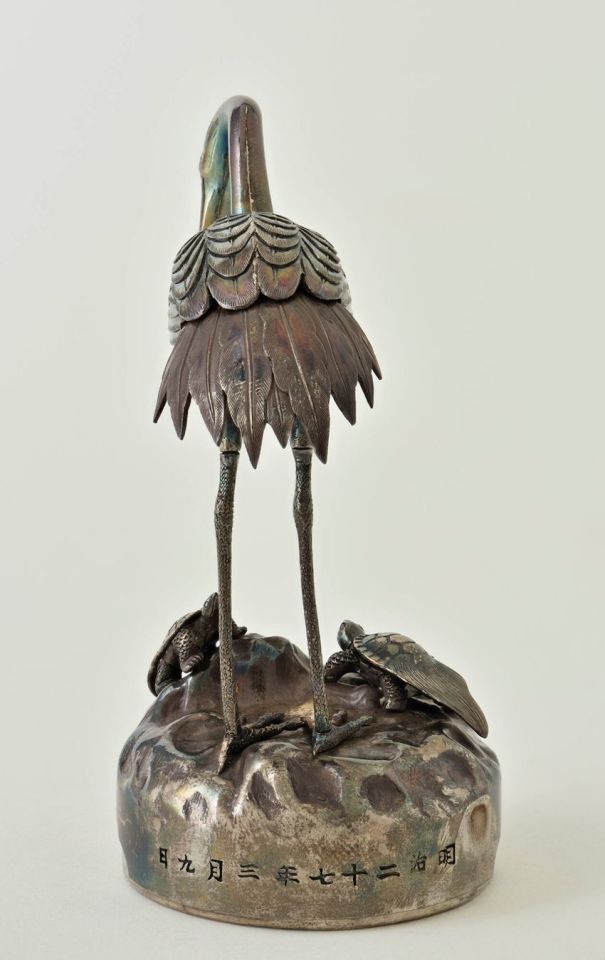
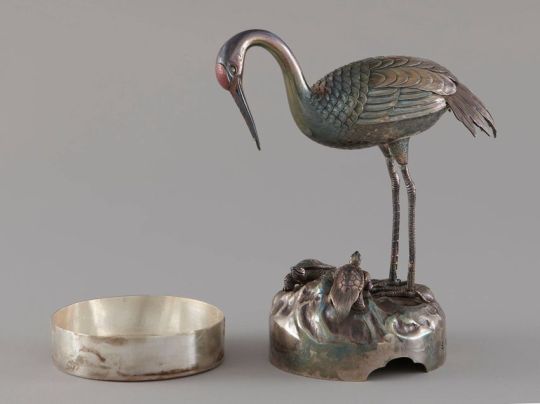

Crane and Tortoise Box. Japanese origin, dated 1894; medium is silver with gold and lacquer; dimensions: 10.5 cm high. From the Isabella Stewart Gardner Museum collection, accession number: M18e44.a-b
"This crane and tortoise box was designed and produced to be given to guests at the imperial banquet for the twenty-fifth wedding anniversary of the Meiji Emperor and Empress in 1894. Often referred to by the French term “bonbonnière,” the box is decorated with a crane and two tortoises (minogame), historic motifs that convey messages of auspiciousness and longevity across East Asia. …"
(Source: gardnermuseum.org)
#bonbonniere#box#containers#late 1800s#meiji period#japanese design#animal motif#crane#tortoise#birds#reptiles#metal#silver#grey#brown
148 notes
·
View notes
Note
What if Disney adapted the Tale of the Bamboo Cutter?
I am only vaguely familiar with the context of this story, but I don't think I would give it to Disney. While I'm inclined to say that it would be better adapted into Japanese animation, for Disney vibes without involving Disney, I would latch onto the moon celestial aspect and ask the team from Over The Moon to do it. But beg them to pretty please make it all in their 2D storybook style:

This story is a true tragedy, at least from a mortal perspective, and I think these dreamy, romantic visuals would suit it:
A bamboo-cutter discovers a tiny baby inside a shining stalk of bamboo and he and his wife take her in as their own child.
From that moment on he finds gold inside every stalk he cuts has a nugget of gold inside it.
The baby, Kaguya-hime, grows into a young woman in just three months and is so beautiful that even though her parents try to hide her, men start to come from all over to court her.
Five noblemen are put through impossible trials which they all fail to try and win her hand.
The emperor of Japan falls in love with her, but she won't even have him for a husband, even though she keeps writing with him.
Three years pass and in the summer the mysterious maiden begins crying whenever she sees the moon. At last she reveals she is not of the earth but belongs on the moon and will be taken back there, to parents she has by now forgotten.
Her foster parents try to hide her, the emperor even sends guards to keep away the envoys of the moon who come to fetch her, but of course to no avail.
A chariot comes down for her with the rising of the yellow harvest moon. A messenger tells the bamboo-cutter that Princess Moonlight was sent to earth as punishment for committing a grave fault and that they have sent him the gold in return for the good care she received.
He begs for them not to take him and Kaguya-hime tells him she goes against her will and would rather have stayed with her loving foster parents in their old age, but she must go.
Her foster father is not allowed to go with her. She gives him her embroidered robe as a keepsake. When she is given Elixir of Life to drink she even tries to share it with him, but she is prevented.
Finally she writes a letter to the emperor, encloses the rest of the Elixir of Life and gives this to her foster father, asking him to deliver it. Then she ascends into the sky in the moon chariot.
The emperor has her gift bunt at the summit of Mount Fuji so that the smoke can be seen rising from there to this day.
I think a faithful adaptation should keep it a tragedy, but perhaps there could be just a little bittersweet mixed in with the sorrow for the poor parents. Maybe they can hear their daughter singing to them when they look up to the moon. Or perhaps the ending could be made a little less formal and the princess's celestial parents can come down themselves to get her back and to thank her mortal foster parents for all they have done for her. If I were adapting this I would downplay the part of the emperor a bit and really put the focus on the relationship between the moon princess and both her foster parents.
#The Tale of the Bamboo Cutter#laura babbles#disney goggles#japanese fairy tales#I am aware that Over the Moon was inspired by Chinese folklore#but the “lady pulled away to the moon motif” is strong
99 notes
·
View notes
Text
Floriography: Resources for Writers
For centuries, flowers, herbs, and other plants have been used to convey meaning, both in life and in literature. Many of the greats, including Shakespeare, Austen, the Brontë sisters, and Steinbeck referred to floral symbolism to delicately weave into their intricate works. Flowers influenced art for generations before us, and with luck, they will continue to inspire artists for generations after us--long after we've become them.
Victorian Floral Code.pdf
Floriography: An Illustrated Guide to the Victorian Flower Language by Jessica Roux
Language of Flowers Wiki
Hanakotoba - Japanese Flower Language Wiki
Ikebana - Japanese Flower Arrangement Wiki
Kate Greenaway's Language of Flowers
Floral Emblem Guide
Plant Motifs In English, Russian, and Tatar (pdf)
Flower Language Myths
Language of Flowers.com
#culture#language#writers#author#writing reference#reference#victorian flower language#poets on tumblr#japanese folklore#slavic folklore#motifs#creative writing#indie author#floriography#for future reference#resources#writing tips#writing advice#writing tools
217 notes
·
View notes
Text

Surprise! A SECOND pic today! It's Ryou's birthday too! And it's year of the dragon, so it fits 🐉
Please do not repost
#breezycheezyart#voltronshirobirthday#ryou#twinganes#in my version HE KEEPS THE LONG HAIR#btw it was tough figuring out the colors for his suit because there's not a lot of references available lol#ryou can be read as dragon in japanese; iirc; so i play with that motif a lot with him hehe
138 notes
·
View notes
Text
Kamen Rider Blade character name meanings
I was watching an anime lyric video on YouTube last night and recognized one of the kanji in the lyrics also being used for one of the main characters' names in Blade and ended up falling down a rabbit hole (aka Jisho.org) so I made a guide breaking down the Blade cast's names because 1. when do I ever not think about this show and 2. language stuff is fun to look into (also included Shiori and Kotaro because why not, slight spoilers incoming)
♠ Kazuma Kenzaki (剣崎一真)/Kamen Rider Blade ♠
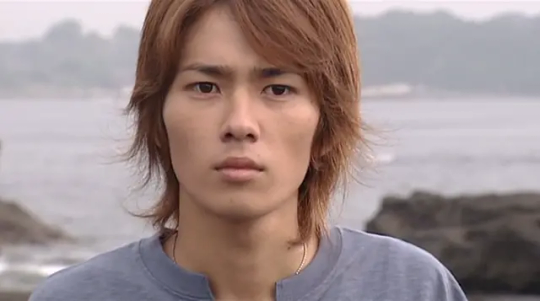
Kenzaki (剣崎): ken (剣) - sword (spade itself also derives from the Spanish and Italian spada meaning 'sword'); zaki (崎) - small peninsula, promontory
Kazuma (一真): kazu (一) - one; ma (真) - true/truth, reality, genuineness (could refer to Kenzaki's genuine love for humanity and eventually Hajime); both characters together could mean "one truth" (could refer to Kenzaki seeking the one true way to allow Hajime to keep living without having the world be destroyed during the finale) or "one reality" (could refer to the current nature of the Battle Fight preventing Kenzaki and Hajime from seeing each other again despite them defying their fates)
Blade: the main part of a sword whose name is derived from the Old English blæd meaning 'leaf' (also hence why the spade is replaced with the leaf in German playing cards), related to the Suit of Swords (Spades) in the Minor Arcana
♦ Sakuya Tachibana (橘朔也)/Kamen Rider Garren ♦

Tachibana (橘): mandarin orange (specifically the Citrus tachibana, also explains why one of his themed drinks from the Kamen Rider Diner was orange-flavored)
Sakuya (朔也): saku (朔) - new moon (symbolizes new beginnings in astrology, which ties into Tachibana's return to being Garren again after initially trying to quit and his character song literally being called Rebirth), the first day of the lunar calendar; ya (也) - to be (classical form), also a common suffix in Japanese male names
Garren: either a corruption of the English word 'currency' in Japanese or phonetically sounds similar to the French carreau meaning 'diamond' (might be a stretch though), related to the Suit of Coins (Diamonds) in the Minor Arcana
♥ Hajime Aikawa (相川始)/Kamen Rider Chalice ♥

Aikawa (相川): ai (相) - mutuality, togetherness (also phonetically sounds the same as the Japanese word for love, which ties into Hajime's character arc and Chalice's heart motif); kawa (川) - river, stream; both characters together could mean "river of mutuality" or "river of togetherness"
Hajime (始): beginning (ironically contrasts his true role as humanity's destroyer)
Chalice: holy cup or goblet whose name is derived from the Latin calix meaning 'cup', related to the Suit of Cups (Hearts) in the Minor Arcana (also symbolic of Hajime's growing love and humanness throughout the show)
♣ Mutsuki Kamijo (上条睦月)/Kamen Rider Leangle ♣

Kamijō (上条): kami (上) - above, up; jō (条) - article, clause
Mutsuki (睦月): mutsu (睦) - intimate, friendly, harmonious (could refer to Mutsuki learning to control the Spider Undead's power with Tachibana's help); tsuki (月) - moon, month; both characters together mean the ancient Japanese name for January
Leangle: an Aboriginal club/polearm-type weapon, related to the Suit of Wands (Clubs) in the Minor Arcana
💻 Shiori Hirose (広瀬栞) 💻

Hirose (広瀬): hiro (広) - vast, broad, spacious; se (瀬) - rapids
Shiori (栞): bookmark, guidebook (could refer to her role as the gang's resident Undead tracker and Kenzaki's closest ally at BOARD)
🥛 Kotaro Shirai (白井虎太郎) 🥛

Shirai (白井): shira (白) - white (callback to his love for milk mayhaps /j); i (井) - well, town, community (could refer to him befriending and providing hospitality for Kenzaki and Shiori after BOARD kicks the bucket, also farmhouse trio ftw)
Kotarō (虎太郎): ko (虎) - tiger, drunkard (for milk obviously /j); ta (太) - thick; rō (郎) - common suffix in Japanese male names
#kamen rider#kamen rider blade#kazuma kenzaki#kenzaki kazuma#kamen rider garren#sakuya tachibana#tachibana sakuya#kamen rider chalice#hajime aikawa#aikawa hajime#kamen rider leangle#mutsuki kamijo#kamijo mutsuki#shiori hirose#hirose shiori#kotaro shirai#shirai kotaro#credits to the kr wiki and jisho.org (+ the many dictionaries i stumbled along the way) for the extra info/insight!#notice how kenzaki and hajime's names relate to their respective tarot motifs#while tachibana and mutsuki's names relate to the moon/lunar month#also satsuki (mutsuki's successor in the blade novel) appears to be named after the ancient japanese name for may#weirdly searching up leangle turned up (heh) blanks for me other than the kr wiki so idk how they found that info#i saw a youtube comment saying garren is also likely a corruption of 'galleon' but idk how much that holds water since i'm not john toei#i was considering including the missing ace riders here as well but idk#kinda want to do a similar post for the faiz cast
35 notes
·
View notes
Text












A Mustardseed webweave for @picturemecountingcards
Molly McCully Brown // unknown // solitary-sister // unknown // unknown // Marlon James // Brian Clifford // make me into something (useful) // sign crushes motorist // Boyish - Japanese Breakfast // Francisco de Zurbarán // Safa Sharfudeen
#woe.begone#wbg spoilers#web weave#web weaving#poetry#molly mccully brown#marlon james#sign crushes motorist#japanese breakfast#francisco de zurbarán#safa sharfudeen#mustardseed#i have this vivid image of mustardseed/edgar being a lamb#a lamb in wolf's clothing (perfect edgar being a capable killer - couple that with mikey's guide/sheepdog motif its even better)#(the sheep kills the sheepdog)#edgar being a sacrificial lamb - at the end of season 4 or how michael delivers mustardseed to the flinchites#blood#idk if i have to tag anything else
29 notes
·
View notes
Text

cover used in Buddhist temple sanctuary (uchishiki)
probably 1820's
Deep indigo silk satin patterned with large 16-petal Imperila chrysanthemum (kiku) and the well curb design (izutsu)
#uchishiki#buddhist art#floral art#floral motif#buddhist motif#Japanese motif#kiku#chrysanthemum#Imperila chrysanthemum#izutsu
2 notes
·
View notes
Note
Hello! I love your blog bc it helps me a lot with writing and crafting. Thank you so much for making it!
Are there any patterns that deal with poison? Either in the pattern or in the dyeing process?
Even if there's not I'm glad you and this blog exist 💗
(anon continues) Poison in the dyeing process, like when green dresses were dyed with copper arsenite and it was extremely deadly.
Or a pattern of someone being poisoned, like a historical/folktale.
_______________________________________
Thank you for your kind words <3 I tried to keep things organized but the subject is huge so my of the top of my head answer is going in many directions. I hope you'll still find what you need :3
I'll briefly cover here dyes and (pigments), poison motifs, real life and supernatural poisonings. Buckle up we've got a long post ahead!
____ ABOUT DYE
Tbh I had to think for a moment because I don't recall major "poison" stories linked to dyes in Japan, be it fictionous or real (yet that doesn't mean none ever happened, especially considering Japan's history of industrial poisonings...).
Most gruesome details in the fabric industries I know of are about the horrific life & work conditions of female laborers in spinning mill manufactures (as in many countries, Japan industrialization process was ghastly...).
If potters and dyers had excellent practical knowledge, chemistry as a science officially started kind of late in Japan as it was not a local interest, and as rangaku (study of Western knowledge) often favored other subjects like medicine or warfare.
So, until the introduction of aniline dyes (not textile related, but this article about the use of synthetic dyes in ukiyoe printing is super interesting), Japanese worked with "natural" dyes, like ai (indigo) which was the most used during Edo period.
As with any ingredient, being natural doesn't equal safety. Some mixtures could be quite potent/foul, and process could be dangerous. Plants and minerals base ingredients could be toxic (cinnabar and orpiments were then used as paint pigments, and lead could be found in make up), as were mordants used to set colors.
If you want to easily overview which ingredients were used to create colors, I recommand browsing [Irocore] which presents colors with explanation in English in their database (pick a color then scroll down).
Not related to poison, but ai (indigo) is traditionally prepared in aigame/enormous floor set jars I find utterly terrifying:
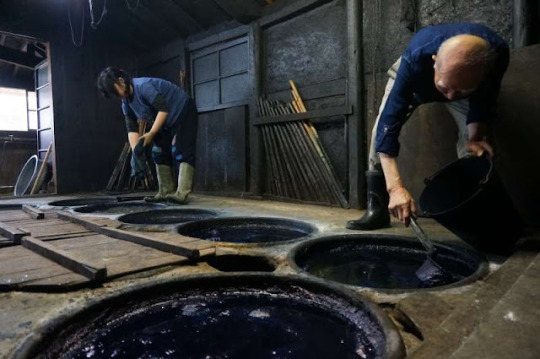
I don't know if this tidbit can help you, but some dyes and mordants actually damage the fabric overtime, leaving them brittle (silk desintegrates after a while which is a huge issue in textile conservation).
____ POISON MOTIFS
Concerning "poison" themed patterns, none would be actually used traditionally on a kimono or an obi beside novelty items ^^;
For example, many plants can be toxic, but I don't see them set as pattern for this property - they'd rather refer to a poem, be a symbol of the passing of seasons etc. Fuji (wisteria) can be quite harmful, yet it's a beloved traditional motif in Japan.
You have much more chances to find pattern with kujaku (peacock) which are thought to be impervious to poison in Buddhism, than say venomous mukade (centipede) or the horrific ômukade (a youkai I covered in a folktale).
Snakes like the habu and mamushi are dangerous, but if used as pattern snakes are most often auspicious and linked to rain dragons or goddess Benzaiten.
If you squint hard, toxic fugu could count as poison pattern, but such a seasonal delicacy as a motif would mostly underline wealth (as those fishes are pretty expensive as they are prepared by specialized chefs), a kind of carpe diem spirit, or just a fun pattern because fugu balloon shape is cute ;)
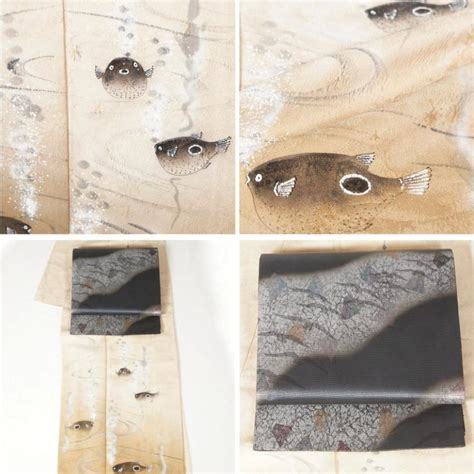
____ POISON MURDERS
Poisoning was certainly a thing is Japan since ancient times (see kodoku sorcery). Poisons were for example used in some fishing techniques.
I am pretty sure some kuge and buke were disposed of this way - even thought poison was seen as a coward weapon (hence why its supposed to be only used by shinobi/ninja - even if this "fact" is opened to a lot of discussions!).
During Edo period, such murders made up the news and penny dreadful-like illustrated books favored by city dwellers in need of a fright. But those stories didn't pass to posterity beside cheap ukiyoe plates, and were never as popular as some shinjû (double suicides) or ghost revenges like poor poisoned and murdered Oiwa's:
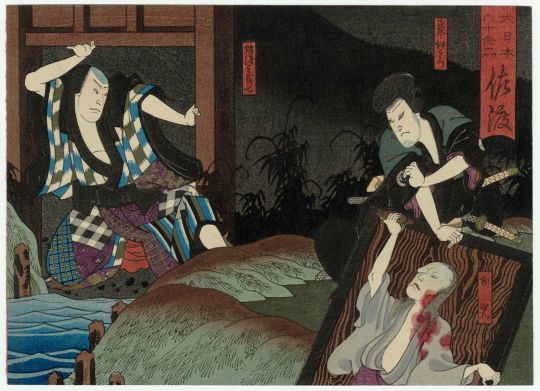
____ SUPERNATURAL POISONINGS
If your poison is both physical and metaphorical illbeing, mushi could be your guys ^^ This term actually covers everything small and crawling, from real worms and insects, to anything inside one's body causing distress - be it a parasite, an unknown illness, an overboard emotion, a curse etc. If you've read/seen Mushishi you've got what I mean:
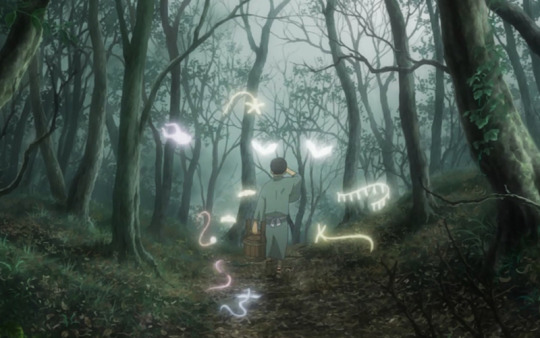
In fact any illness-causing being could count as poison-bringer. Hôsôkami (smallpox demon) was truly feared by all before vaccination was introduced in Japan.
Finally, continuing the supernatural poisoning trail, best girl is probably legendary fox witch Tamamo no Mae who among other terrible deeds made emperor Konoe fall sick with poisonous miasma (some version of the story attributes the disease to another monster, the nue). I covered a similar murderous kitsune folktale here.
#ask#japan#japanese history#dye#pattern#motif#poison#venomous#illness#natural dye#aniline dye#mordant#pigment#kujaku#peacock#mukade#centipede#omukade#youkai#snake#hebi#mamushi#habu#benzaiten#fugu#mushi#insect#mushishi#Hôsôkami#smallpox demon
117 notes
·
View notes
Text
There's something that I noticed for some time ever since I've started scanning Japanese music magazines to translate and post them
No, actually, it was WELL before I took that faithful dive to buy a scanner and those magazines
Namely, that over the decades that Musers have bought and scanned those magazines to post the pics that we now circulate online, rarely ANY of them bothered to translate the articles
Like, they just wanted the pics??? And not like the interviews that were done???? The reviews for their discography or live shows?????
I think having been in the Visual Kei/JRock fandoms has spoiled me in the sense that I took translated interviews for granted. And now I'm the one translating these articles for the current generation of Musers and fans of other bands to read and get to know our favourite band again
#Muse#Muse band#I say taken for granted namely in the way that accessibility to the VK/Jrock fandom was just a few steps harder#because the musicians mainly talk in Japanese you had to rely on translators to know what they're talking about#so we relied on translated interviews to actually understand the motifs and art#behind their albums and songs#so when I started translating these scattered scanned magazine pages with Deepl#I had no idea that so much information wasn't really known#or at least the accessibility to these translated articles were few and far between#so now I translate not only Muse articles#but also Coldplay and Green Day and even a few artists and bands for my mutuals#I don’t know#I'm just wondering if people here loved that they now get to read these old articles that were overlooked for years#and scanning the pics on a much higher resolution than the ones that have been circulating online for years now
16 notes
·
View notes
Text

Sculpture in the Form of an Iris Growing from a Shaped Waveform Base. Japanese origin, artist and date made unknown, medium is silver. Part of the Freer Study Collection at the Smithsonian National Museum of Asian Art, accession number: FSC-M-34a-c.
(Source: asia.si.edu)
169 notes
·
View notes
Text
i need to make an excel spreadsheet classifying all japanese breakfast/michelle zauner songs by themes and motifs. no i dont
#1. marriage - wife 2. marriage - breadwinner 3. marriage - comfort 4. marriage - trap 5. death obviously 6. cheating 7. abandonment#8. transit and leaving home 9. comfort 10. illness 11. sex but it's sad 12. music career 13. dog motif 14. eugene oregon 15. futuristic#needs to be studied#japanese breakfast#personal
13 notes
·
View notes